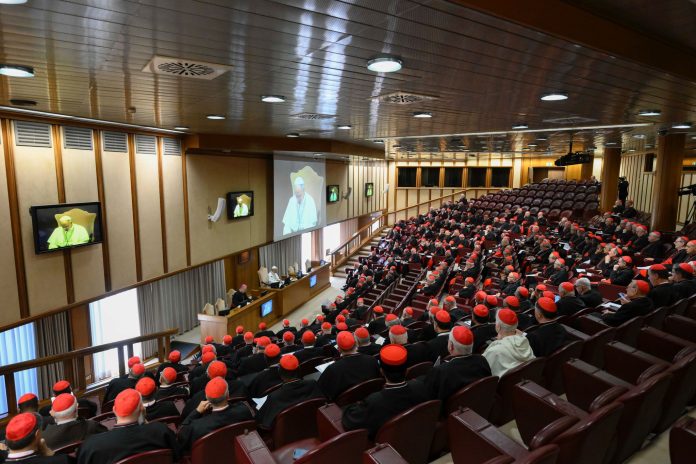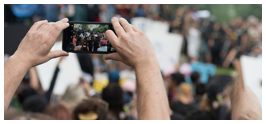I joined the pre-Conclave General Congregation of the College of Cardinals already during its fifth session, following the death of Pope Francis.
The Dean of the College, 92-year-old Cardinal Gianbattista Re, promptly assumed his responsibilities—just three days after Pope Francis imparted his final blessing on Easter Sunday and peacefully closed his eyes on Easter Monday.
The Camerlengo, Cardinal Kevin Joseph Farrell, also acted without delay. His duties are clearly delineated in the apostolic constitution Universi Dominici Gregis, as amended by Pope Benedict XVI’s Motu Proprio Normas Nonnullas, dated February 22, 2013. Even popes know they are not indispensable.
They may resign; they may die, but no worries. They make sure the seat they leave does not remain vacant for too long. After all, we are not a two-thousand-year-old Church for nothing.
From the same constitution, I learned that members of the College of Cardinals were not even required to await a summons to Rome. It was our moral obligation—especially for the electors among us—to journey to Rome and participate in the Conclave and its preceding general congregations. Even the emeriti—in their eighties and nineties—dutifully came to participate in the age-old Catholic tradition of making sure the jaws of death do not prevail over the See of Peter.
No formal invitation was necessary; one simply needed to arrive in a black filettata cassock, red sash, and red zucchetto to gain admission to the general congregations held at the Paolo VI Auditorium. We trusted Vatican security to recognize us by face, even though we had not yet received identification badges. Remarkably, the Swiss Guards saluted us as we entered. I pondered—what if an impostor had the audacity to commission a black filettata cassock from the Euroclero, complete with red sash and zucchetto, and posed as a cardinal? Later, I discovered that the CCTV cameras at the entrance had already scanned our faces upon entry. This explained why the usher who greeted us was wearing a walkie-talkie earpiece, likely receiving cues from those monitoring the surveillance feeds.
He guided us to a corner where we collected our mini leather attaché cases containing collar ID name tags, notepads, schedules, and thick dossiers with pertinent information about each cardinal. With these, we were assured that further identity verification was unnecessary. Cardinal Joe Advincula, having forgotten his ID and zucchetto on the second day, was prepared to be denied entry. However, the usher, recognizing him, smiled and said, “Nessun problema, eminenza.”
The pre-Conclave sessions spanned 14 days. I arrived on April 26 and began attending the general congregations from the fifth session (April 28) onward. Fourteen days of deliberations and only two days of the electoral Conclave—this disparity speaks volumes.
Based on the content of the interventions, it was evident what the guide questions were. The Dean seemed to assume we were all literate enough to download the apostolic constitution, understand our roles in the general congregations, know which button to press to speak, and which channel to select for translations in six languages: 1 for Italian, 2 for Spanish, 3 for French, 4 for English, 5 for German, and 6 for Portuguese.
None of the speakers felt compelled to reiterate the guide questions. From their responses, I inferred that the first question concerned the current state of the world, the second addressed the present condition of the Church, and the third inquired about our expectations for the next pope.
(Sometimes I wonder why people describe the Conclave as a very secretive event. The whole process is described in great detail in the apostolic constitution, Universi Dominici Gregis, which is a public document and can be accessed by anyone through the Vatican website, vatican.va. If some media people sounded like they were totally clueless about what we were doing inside the Sistine, it means they did not care to do research. They probably just watched the blockbuster movie The Conclave. Try prompting ChatGPT with the question: What happens in a Conclave? You’ll get all the details about it; no secrets. Of course, our lips are sealed about numbers and personalities and issues discussed at the pre-Conclave sessions—precisely to prevent it from getting politicized. Like we kept saying—there are no candidates in a Conclave. The exercise is not a political race. It is rather a liturgical event, an exercise in communal discernment, a moment in which the whole Church is asked to join in prayer.)
At one juncture, after listening to nearly fifty speeches ranging from five to fifteen minutes each, I whispered to the cardinal beside me, “You’ve got to be crazy to aspire to become pope after hearing all these.” Considering the immensity of the responsibilities he is expected to bear—as Bishop of Rome, as Supreme Pontiff of the Universal Church, as Head of the Vatican State and of the Roman Curia, and as Chief Steward of the Church’s resources all over the world—weren’t we somehow looking for a superhuman?
No wonder Simon Peter fell to his knees when, after following Jesus’ command to cast into the deep and his nets nearly tore from the catch. He exclaimed, “Not me, Lord. Please find someone else. I am unworthy of the task you’re assigning me.” (Paraphrasing mine.) Yet, Jesus did not release him. Peter attempted to withdraw again, like a stubborn fish, after his threefold denial. Understandably, having lost face before the one he had earlier proclaimed as the Christ, the Son of the living God, he did not react with elation when the beloved disciple announced, “It is the Lord.” Instead, he plunged into the water, overcome with shame.
And yet, paradoxically, unable to relinquish the fish he had just caught, he found himself dragging the net ashore. There stood the Master, kindling a bonfire and preparing fish for the grill. Peter couldn’t even lift his gaze to meet His eyes. He resembled a shattered bowl, its fragments being mended with gold by his friend, akin to the ancient Japanese art of kintsugi: “Do you love me?”
I witnessed that same pained expression firsthand. Prevost remained seated even as the rest of us stood in ovation when he surpassed the two-thirds threshold, our applause resounding for nearly five minutes until the Dean requested we sit down again to complete the count. All eyes were upon him as each remaining ballot was read aloud: “Prevost, Prevost, Prevost, Prevost…” Upon conclusion, we stood once more, repeating our ovation. His eyebrows furrowed as his deep-set eyes surveyed the room.
As the Dean approached to inquire whether he accepted the mandate, I could almost hear the collective plea of the College of Cardinals—“Please don’t say no…” I wondered if, in past conclaves, anyone had ever declined the papacy. Only the sacred walls of the Sistine Chapel would know, as electors are bound under pain of excommunication to maintain secrecy. A simple “Non accepto!” would have sufficed, and the ballots would have been incinerated, producing black smoke instead of white from the chimney, signaling to the world that no pope had yet been elected. No big deal; we just start all over again if that ever happened.
Now I understand why, throughout our pre-Conclave sessions, several cardinals offered words of reassurance in their interventions, echoing Jesus’ “Be not afraid.” Messages like, “We believe the Holy Spirit has already chosen the next pope. He is here among us, but we have yet to identify him. Dear brother, whoever you are, should the lot fall upon you when we cast our votes, please accept it. We assure you of our allegiance and fidelity.” I do not know why these words moved me profoundly, even to tears.
Fast forward to the present—the Lord’s anointed has been revealed. Surely, he would look back and recall those comforting words from his brethren which had been said even before he was elected. What a joy it was to hear him say, “Accepto.” In that instant, serenity seemed to envelop him, transforming his furrowed brow into a gentle smile as he bowed his head amidst our applause. Soon, the ballots were consigned to the fiery furnace, and white smoke billowed from the chimney, eliciting jubilant cries from the crowd outside.
When I looked again, Prevost had already vanished, led by the ceremoniere to the Room of Tears to be vested in white. Another thunderous applause erupted when he came out of that room now garbed in white and was presented to us. We lined up, eagerly taking turns to offer him the greeting of peace. I glanced at the papal chair behind him. Non era più vacante. It was no longer vacant. It had a new occupant—Peter’s successor, Pope Leo XIV.
Cardinal Pablo Virgilio David of Kalookan, president of the Catholic Bishops’ Conference of the Philippines and vice president of the Federation of Asian Bishops’ Conferences, was among the 133 cardinal-electors in the 2025 conclave that elected Pope Leo XIV. A biblical scholar and outspoken advocate for human rights and social justice, Cardinal David is known for his pastoral presence in impoverished communities and his strong stance against violence, poverty, and corruption in Philippine society.









